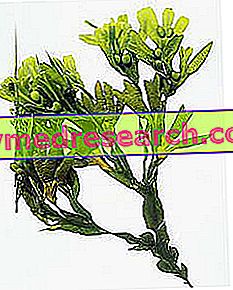Nutritional Properties
Bananas are highly energetic fruits, which contain 12-13g of simple carbohydrates per 100g of edible portion: this characteristic makes them not very suitable for frequent consumption in the presence of diabetes mellitus.

The sugars contained in bananas are 83% monosaccharides or small polymers and the dietary fiber content is very low, about 1.8g. The result is a fairly high glycemic index, around 50, a value calculated on the average of different species and degrees of maturation. Of course, it is plausible to say that the consumption of the banana is oriented to the ripe fruit. which has a glycemic index closer to 70.
Diabetes
Diabetes is a chronic - degenerative disease with a dysmetabolic character, characterized by chronic hyperglycemia and other dysfunctions of carbohydrate, lipid and protein metabolism, which cause frequent complications. Diabetes mellitus differs in:
- Type 1 (always insulin dependent)
- Type 2 (usually, NOT insulin-dependent)
Paradoxically, in diet therapy of type 1 diabetes, the food choice is less incisive on the glycemic balance; this is due to the administration of exogenous insulin, whose dose is estimated on the meal to be consumed; therefore, the use of banana wanders from some variables instead very important in type 2 diabetes. These are:
- Glycemic load
- Glycemic index
- Combination of the two factors.
In type 2 diabetes, where circulating insulin has an endogenous origin (produced by the body), but is functionally altered by peripheral resistance, the regulation of the quantity of simple carbohydrates and the speed with which they enter into circulation are of fundamental importance in maintaining of physiological glycemic levels.
Fruit and Diabetes
It is true that bananas have different characteristics depending on the degree of ripeness, however, in the presence of type 2 diabetes mellitus, the food choice of fruit must necessarily be oriented towards low-calorie products, with a modest glucose content and characterized by a share of fiber good or at least fair food.
Without imposing the exclusive consumption of grapefruit and "Granny Smith" (green apples), the diabetic can freely choose between: plums, oranges, kiwi, apples, pears, melons, watermelons, peaches, apricots ... etc.
On the contrary, they have to be drastically reduced: bananas, grapes, mandarins, khaki, figs and all the highly energetic and sugary fruits. Furthermore, it would be a good idea to consume portions of fruit less than or equal to 150g and to reduce the frequency of consumption to one or two pieces per day.
In case of physical activity
A final note on banana consumption and physical activity in diabetes. It has been demonstrated and still applied that motor therapy acts directly and indirectly in glycemic control; directly because it increases the sensitivity of muscle receptors to insulin uptake, indirectly thanks to the likely reduction in weight which also determines an improvement in glycemic control.
Taking advantage of the typical post-exercise anabolic window (proportional to the intensity and duration of the effort), even in conditions of diabetes it could be correct to use the banana. Obviously, we rely above all on the common sense of the patients, as the portions must be useful for the treatment (100-150g) and the frequency of consumption should not exceed 2 weekly bananas.
Bibliography:
- Sydney University's Glycemic Index Research Service - International table of glycemic indexes and glycemic loads
- Guidelines for diabetes mellitus - European Diabetes Working Party for Older People 2001-2004 - Congress of Verona 12-14 May 2005.



